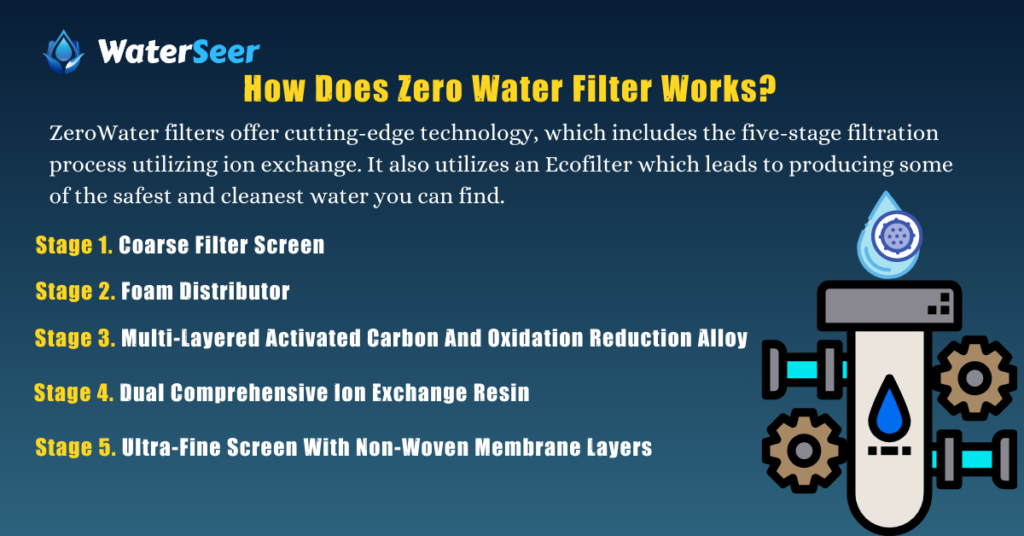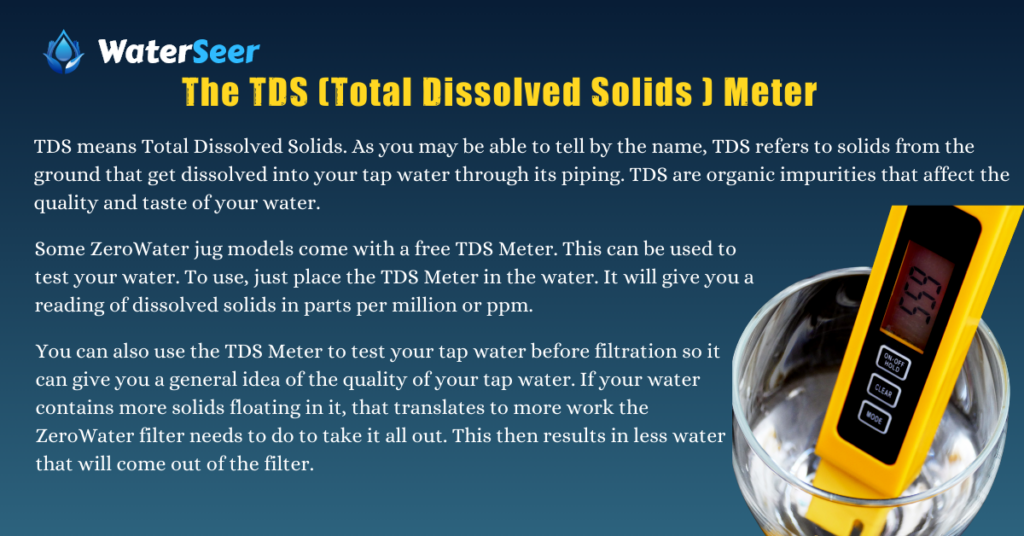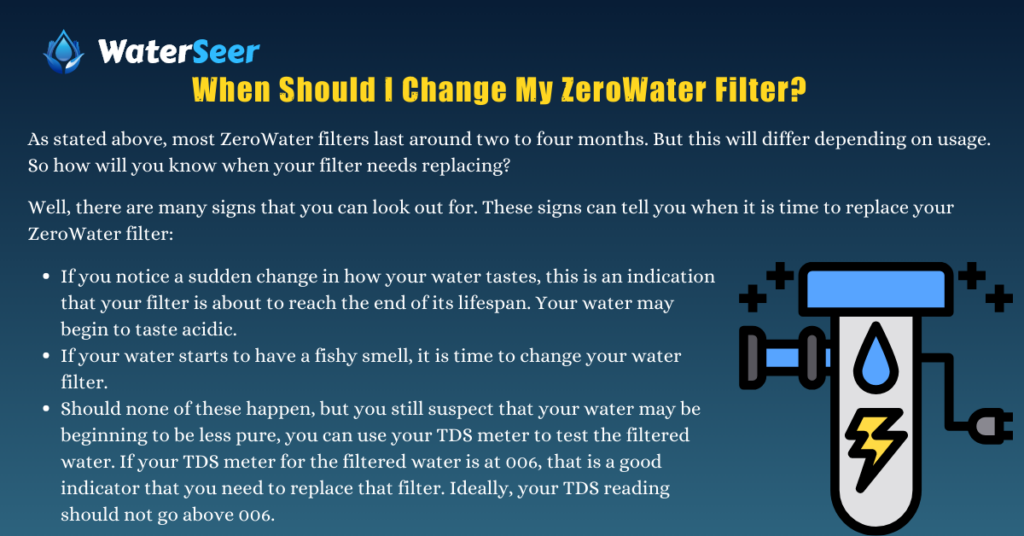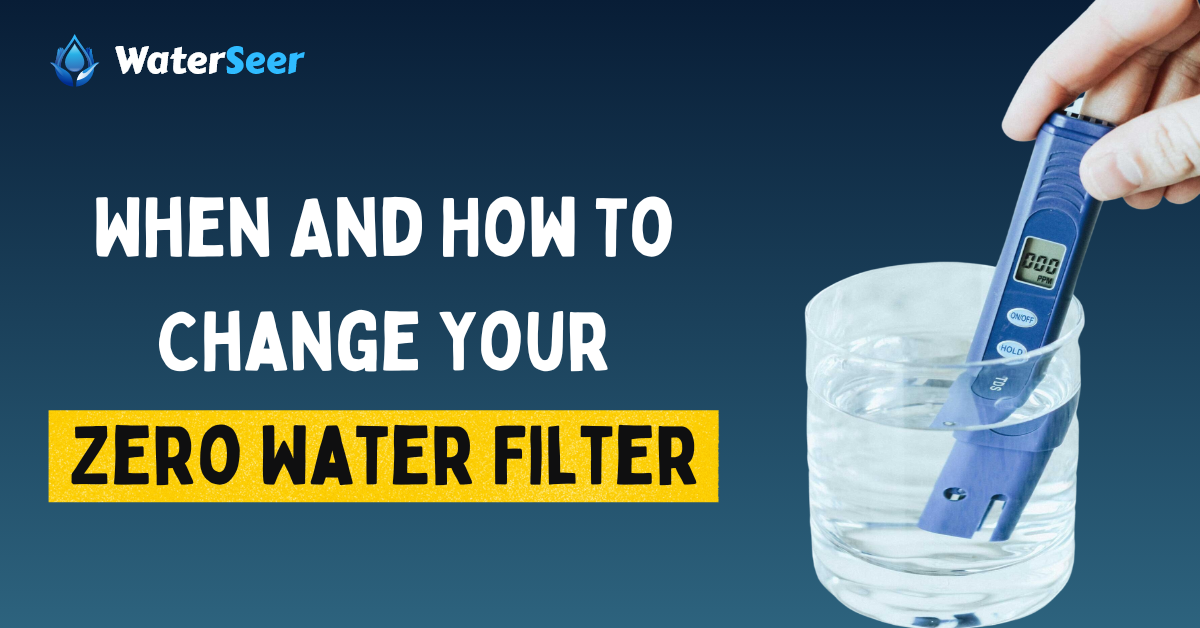ZeroWater filters are excellent and handy devices that can provide you with clean, great-tasting drinking water. These water filters are unique, exemplary tools that purify your water scientifically by treating them through a filtration process. This water filtration process involves removing foreign substances like impediments and metals, which will then lead you to have water that is free from impurities.
Investing in a ZeroWater filter means investing in good health for yourself and your family. It’s also a good investment because, in the long run, it will actually allow you to cut costs and save money since you will no longer have to buy bottled water for your family.
Like all other water filters, ZeroWater filters need to be replaced periodically. Doing so will help ensure that your ZeroWater filter is always doing its job — that is, providing you with accessible, safe, and clean H2O for your household.
Taking good care of your ZeroWater filtration system is essential in maintaining its performance, which then leads to you and your family consuming nothing but the water that is good for your health.
Get to know your ZeroWater filter with our guide below so that you know when to change the filter — and how to do so when needed!
About The ZeroWater Filter
ZeroWater filters are filters that are pre-installed in ZeroWater filter water jugs. These pre-installed water filters provide healthy and clean drinking water, and they also ensure that the carbon contained in the water is removed. ZeroWater filters boast of being able to give you water that is purer than other filtration systems because they remove more particulates and elements than others.
The reason for this is that, unlike other water filters, which usually have a two-stage process, ZeroWater filters have a five-stage filtration process. Additionally, Ion Exchange Technology is used in the process, unlike most other water filters that use only activated carbon to absorb the contaminants.
How Do They Work?

ZeroWater filters offer cutting-edge technology, which includes the five-stage filtration process utilizing ion exchange. It also utilizes an Ecofilter which leads to producing some of the safest and cleanest water you can find.
To achieve this level of purity: water passes through five separate sections of the filter, which removes visible solids, contaminants, and inorganic compounds in your tap water. Let’s walk through the five stages:
Stage 1. Coarse Filter Screen
The first stage is when water passes through the coarse filter screen. This removes the suspended solids such as rust and dust from the water.
Stage 2. Foam Distributor
The foam distributor then eliminates even more of the suspended solids that your water may contain.
Stage 3. Multi-Layered Activated Carbon And Oxidation Reduction Alloy
When water passes through the multi-layered activated carbon and oxidation reduction alloy, organic contaminants are removed from it. These organic contaminants include pesticides, herbicides, chlorine, chloramine, and mercury. This stage prevents bacteria from festering and growing in your water.
Stage 4. Dual Comprehensive Ion Exchange Resin
In this stage, the dual comprehensive ion exchange resin then removes the inorganic compounds from the water. These inorganic compounds include metals, nonmetals, radiological contaminants, and more. The ion exchange technology is utilized by ZeroWater because it effectively removes lead, nitrate, aluminum, zinc, and more dissolved solids that trickle into the water piping.
Stage 5. Ultra-Fine Screen With Non-Woven Membrane Layers
The last part of the filtration process involves an ultra-fine screen that is lined with non-woven membrane layers. These serve to hold the resin in place, as well as remove all remaining suspended solids.
After this five-step filtration process, ZeroWater then recommends testing your water via the use of a TDS Meter, which checks for suspended solids.
The Ion Exchange Technology
The Ion Exchange Technology for water purification works basically by running your water through beads of resin which were loaded with mineral ions (generally sodium). The charged ions then trade places with the unwanted contaminant ions that are in your tap water. The resin beads mentioned absorb contaminant ions while the purified water goes through.
More simply put, the process is just replacing undesirable contaminants such as concentrations of certain minerals with more favorable solutions.
One common utilization of ion exchange for purification of water is to soften hard water, which is done by lowering concentrations of magnesium and calcium in the water.
How Fast Will My Water Run Through The Filter?
Since ZeroWater filters come with a five-stage filtration system, this means that more time will be used in filtering than if you were using something with a two-stage filtration system.
Water will be flowing through at a slower pace — but this also ensures that all the things that you should not be drinking are being removed.
The TDS Meter

TDS means Total Dissolved Solids. As you may be able to tell by the name, TDS refers to solids from the ground that get dissolved into your tap water through its piping. TDS are organic impurities that affect the quality and taste of your water.
Some ZeroWater jug models come with a free TDS Meter. This can be used to test your water. To use, just place the TDS Meter in the water. It will give you a reading of dissolved solids in parts per million or ppm.
You can also use the TDS Meter to test your tap water before filtration so it can give you a general idea of the quality of your tap water. If your water contains more solids floating in it, that translates to more work the ZeroWater filter needs to do to take it all out. This then results in less water that will come out of the filter.
Note: If you continually filter water that has a high TDS reading, your ZeroWater filter’s lifespan may become compromised.
Do All TDS Need To Be Filtered Out?
Here’s another thing you may want to take note of: ZeroWater filters don’t discriminate between TDS, which is good and bad. It simply filters them all out. Some of these minerals may actually be good for you. But if you are worrying about ZeroWater keeping you from minerals that may be good for you, also bear in mind that drinking water low in TDS is very good for you as well.
What Sets ZeroWater Filters Apart
With so many scientific breakthroughs and technological advancements, there are now so many different methods to make water safe for consumption. As we mentioned earlier, one thing that sets ZeroWater filters apart from the pack is the five-stage filtration, which leads to a more thorough process.
Aside from that, ZeroWater filters are able to produce crisp, refreshing drinking water sans electricity or any large machinery. ZeroWater operates mainly on gravity coupled with patience.
How Long Do ZeroWater Filters Last
As we all know, a huge factor that goes into deciding whether or not to invest in a particular water filter is getting a general estimate of costs in the long term. A big question is how often will this filter need to be replaced? Doing it more often than is ideal can lead to costs piling up.
The thing is, there is no fixed answer to this question, particularly with ZeroWater filters. The frequency of filter replacement depends on how much and how hard your filter has been working, relating to the amount of dissolved solids that it is constantly filtering. It also depends on how often you use it.
That being said, most ZeroWater filters last, on average, somewhere between two to four months. Each water filter takes away around 18,000 milligrams of dissolved solids out of your water.
When Should I Change My ZeroWater Filter?

As stated above, most ZeroWater filters last around two to four months. But this will differ depending on usage. So how will you know when your filter needs replacing?
Well, there are many signs that you can look out for. These signs can tell you when it is time to replace your ZeroWater filter:
- If you notice a sudden change in how your water tastes, this is an indication that your filter is about to reach the end of its lifespan. Your water may begin to taste acidic.
- If your water starts to have a fishy smell, it is time to change your water filter.
- Should none of these happen, but you still suspect that your water may be beginning to be less pure, you can use your TDS meter to test the filtered water. If your TDS meter for the filtered water is at 006, that is a good indicator that you need to replace that filter. Ideally, your TDS reading should not go above 006.
The Consequences Of Not Replacing The ZeroWater Filter
If you do not replace your ZeroWater filter when it is due for a replacement, then there are consequences that can prove hazardous to your health:
- The filter will eventually collect a build-up of gunk after a while of usage. That build-up will clog your filter, and the flow rate of your water will significantly decrease.
- Your water will have a fishy stench and will begin to taste bad.
- The filter may become a breeding ground for germs should you leave it unchanged for long. That may lead to you being exposed to pathogens that can cause kidney problems, stomach problems, or worse.
How To Replace The ZeroWater Filter?
Replacing your ZeroWater filter is easy and simple:
Step One:- Disassemble your ZeroWater pitcher. Do this by removing the lid of the pitcher and water reservoir and then unscrewing the blue protective cap. If you notice condensation, don’t worry because this is perfectly okay. The filter’s contents are washed with purified water before packing.
Step Two:- From underneath, twist your replacement water filter into the reservoir’s bottom. Continue twisting and tightening until the reservoir is completely sealed.
Step Three:- Fill up the reservoir with cold water from the tap.
Step Four:- As soon as the tap water goes through the filter and flows into the pitcher’s body, you can fill a glass with your freshly filtered water. One good thing about the ZeroWater filter is, unlike other filters, ZeroWater filters don’t need to be flushed, soaked, or undergo any other preparation before you can use it.
Step Five:- Use your TDS Meter to test your water quality.
Step Six:- Drink up, stay hydrated, and enjoy your crisp, fresh water. When it is time to replace your filter, it is a very seamless process because the cartridges are constructed to do the work! ZeroWater filters are a superb and super easy way to have access to clean drinking water without the need for other factors like machinery, electricity, or tedious installation methods. When properly maintained, they will always provide you with the safest water for consumption. Be mindful and replace your filters when needed, and enjoy great-tasting, healthy h20 all day, every day!

